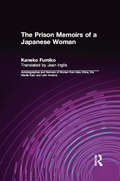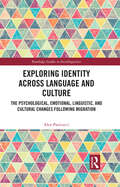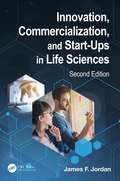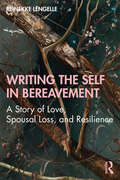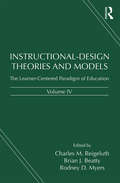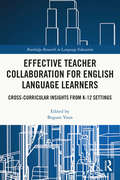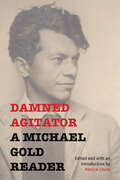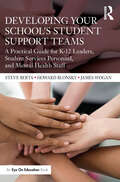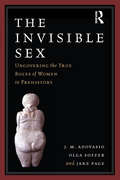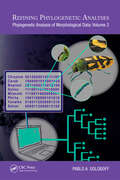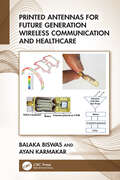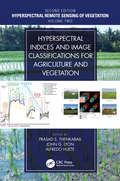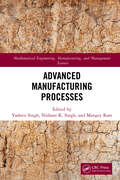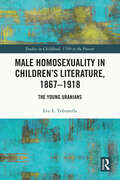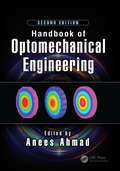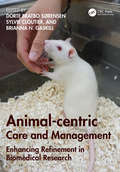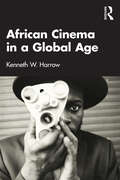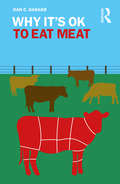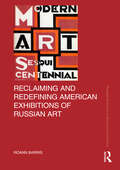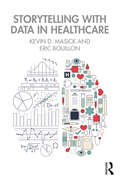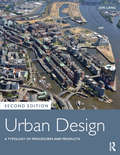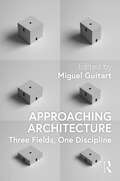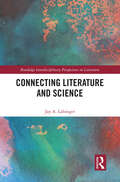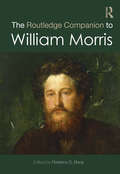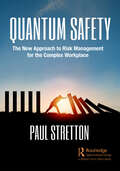- Table View
- List View
The Prison Memoirs of a Japanese Woman
by Kaneko Fumiko Mikiso Hane Jean InglisKaneko Fumiko (1903-1926) wrote this memoir while in prison after being convicted of plotting to assassinate the Japanese emperor. Despite an early life of misery, deprivation, and hardship, she grew up to be a strong and independent young woman. When she moved to Tokyo in 1920, she gravitated to left-wing groups and eventually joined with the Korean nihilist Pak Yeol to form a two-person nihilist organization. Two days after the Great Tokyo Earthquake, in a general wave of anti-leftist and anti-Korean hysteria, the authorities arrested the pair and charged them with high treason. Defiant to the end (she hanged herself in prison on July 23, 1926), Kaneko Fumiko wrote this memoir as an indictment of the society that oppressed her, the family that abused and neglected her, and the imperial system that drove her to her death.
Exploring Identity Across Language and Culture: The Psychological, Emotional, Linguistic, and Cultural Changes Following Migration (Routledge Studies in Sociolinguistics)
by Alex PanicacciThis book explores the ways in which migrants’ experience in today’s multilingual and multicultural society informs language use and processing, behavioural patterns, and perceptions of self-identity.Drawing on survey data from hundreds of Italian migrants living in English- speaking countries, in conjunction with more focused interviews, this volume unpacks reciprocal influences between linguistic, cultural, and psychological variables to shed light on how migrants emotionally engage with the local and heritage dimensions across public and private spaces. Visualising the impact of a constant shifting of linguistic and cultural practices can enhance our understanding of migration experiences, foreign language acquisition, language processing and socialisation, inclusion, integration, social dynamics, acculturation tendencies, and cross-cultural communication patterns.Overall, this book appeals to students and scholars interested in gaining nuanced insights into the linguistic, cultural, and psychological underpinnings of migration experiences in such disciplines as sociolinguistics, cultural studies, and social psychology.
Innovation, Commercialization, and Start-Ups in Life Sciences
by James F. JordanInnovation is a translation of a new method, idea, or product into reality and profit. It is a process of connected steps that accumulates into a brand reputation required for success. Unlike Fortune 500 companies, whose projects are self-funded, a start-up must simultaneously have a value proposition that attracts a customer (for revenue), investors (for capital), and acquirers (for a liquidity event or IPO). A high percentage of start-ups fail before attaining positive cashflow, due to a variety of reasons that are detailed in this book.Avoiding the pitfalls and wrong turns are the goals of this book. Innovation, Commercialization, and Start-Ups in Life Sciences details the methodologies necessary to create a successful life science start-up from initiation to exit. Written by an expert who has worked with more nearly 500 life science start-ups, this book discusses specific processes and investor milestones that must be navigated to align customer, funder, and acquirer needs. Successful commercialization requires attention to multiple constituents, such as investors, regulators, and customers. Investors require liquidity for their return, which is achieved through selling their stock in a public or private sale. The reader will gain an appreciation for the necessary data, partnerships, and skills needed to create a competitive and sustainable company. The author discusses such specific issues as customer problems, demonstrating sales access, and ensuring intellectual property is impervious to competitive advancement. This book is intended to be suitable for entrepreneurs, venture capitalists, and investors in both business and academic settings. These organizations have specific departments, such as R&D, operations, business development, legal, regulatory, and marketing, that would also benefit from this book.FEATURES Focuses specifically on life science start-ups Examines how to determine a company valuation and future "fundable milestones" Explores how to align regulatory and clinical strategies Discusses intellectual property derived from a university or individual through formation to exit. Reviews how start‐ups must simultaneously meet the needs of multiple constituencies at once: investors, regulators, customers and exit candidates James F. Jordan is an author, consultant, and speaker. He is a Distinguished Service Professor of Healthcare & Biotechnology Management, a former Fortune 100 executive, and a managing director of a venture fund.Access the Support Material: https://healthcaredata.center/ Cover design by Sarah Mailhott.
Writing the Self in Bereavement: A Story of Love, Spousal Loss, and Resilience (ISSN)
by Reinekke LengelleWinner, ICQI 2022 Outstanding Qualitative Book AwardIn Writing the Self in Bereavement: A Story of Love, Spousal Loss, and Resilience, Reinekke Lengelle uses her abilities as a researcher, poet, and professor of therapeutic writing to tell a heartfelt and fearless story about her grief after the death of her spouse and the year and a half following his diagnosis, illness, and passing. This book powerfully demonstrates that writing can be a companion in bereavement. It uses and explains the latest research on coming to terms with spousal loss without being prescriptive. Integrated with this contemporary research are stories, poetry, and reflections on writing as a therapeutic process. The author unflinchingly explores a number of themes that are underrepresented in existing resources: how one deals with anger associated with loss, what a healthy response might be to unfinished business with the deceased, continuing conversations with the beloved (even for agnostics and atheists), ongoing sexual desire, and secondary losses. As a rare book where an author successfully combines a personal story, heart-rending poetry, up-to-date research on grief, and an evocative exploration of taboo topics in the context of widowhood, Writing the Self in Bereavement is uniquely valuable for those grieving a spouse or other loved one, those supporting others in bereavement, and those interested in the healing power of poetry and life writing. Researchers on death and dying, grief counsellors, and autoethnographers will also benefit from reading this resonant resource on love and loss.
Instructional-Design Theories and Models, Volume IV: The Learner-Centered Paradigm of Education
by Charles M. Reigeluth, Brian J. Beatty, and Rodney D. MyersInstructional-Design Theories and Models, Volume IV provides a research-based description of the current state of instructional theory for the learner-centered paradigm of education, as well as a clear indication of how different theories and models interrelate. Significant changes have occurred in learning and instructional theory since the publication of Volume III, including advances in brain-based learning, learning sciences, information technologies, internet-based communication, a concern for customizing the student experience to maximize effectiveness, and scaling instructional environments to maximize efficiency.In order to complement the themes of Volume I (commonality and complementarity among theories of instruction), Volume II (diversity of theories) and Volume III (building a common knowledge base), the theme of Volume IV is shifting the paradigm of instruction from teacher-centered to learner-centered and integrating design theories of instruction, assessment, and curriculum. Chapters in Volume IV are collected into three primary sections: a comprehensive view of the learner-centered paradigm of education and training, elaborations on parts of that view for a variety of K-12 and higher education settings, and theories that address ways to move toward the learner-centered paradigm within the teacher-centered paradigm. Instructional-Design Theories and Models, Volume IV is an essential book for anyone interested in exploring more powerful ways of fostering human learning and development and thinking creatively about ways to best meet the needs of learners in all kinds of learning contexts.
Effective Teacher Collaboration for English Language Learners: Cross-Curricular Insights from K-12 Settings (Routledge Research in Language Education)
by Bogum YoonThis volume explores the value of teacher collaboration in meeting the needs of diverse English language learners (ELLs). A range of research-based chapters demonstrate examples of effective collaboration between English language specialists and content area teachers and offer recommendations for collaborative practice.Foregrounding the ways in which teacher collaboration can better support the needs of ELLs in elementary, middle, and high school classrooms, this volume provides evidence-based insights and suggestions to underpin effective teacher collaboration across the curriculum. Through case study examples, readers can understand common challenges and pitfalls, as well as best practices and how to apply teacher collaboration in real classroom settings. Research studies in subject areas including mathematics, science, and English language arts provide a basis for practical, evidence-based recommendations to engender mutual trust, teacher agency, and the development of shared goals to enhance instruction for ELLs’ achievement.This book provides educators with new insights from empirical studies, and is vital reading for researchers, scholars, teachers, and teacher educators who are aware of the importance of collaboration for student success. Those involved in ESL, bilingual, and dual language programs may be particularly interested in this volume.
Damned Agitator: A Michael Gold Reader
by Michael Gold"Is it time to release Michael Gold from his personal gulag to range free in the pastures of 20th-century American literature?" — Jim Hoberman, The NationThis definitive collection of fiction, drama, poetry, and journalism, edited by the author of the award-winning biography Michael Gold: The People's Writer, shows why Michael Gold was once the most famous radical writer in America and why his pro-democracy message still matters. From 1914 to 1966, Gold produced a body of literature best defined as "the direct expression of a man who is angry about something"—the injustices of American society. From his early support for radical leaders like John Reed and solidarity with impoverished immigrants and exploited workers, to his determined support for the Civil Rights movement and opposition to the Vietnam War, Damned Agitator shows how Gold directed his righteous indignation to advocate for those who were least able to advocate for themselves. This collection is the first to include the full range of Gold's writings, from poetry, fiction, and drama to literary criticism, personal memoir, and social commentary. At a time when democracy is threatened worldwide, Michael Gold is freshly relevant to a new generation. Though his legacy has been largely erased, this book recovers the deep political passions of the "damned agitator."
Developing Your School’s Student Support Teams: A Practical Guide for K-12 Leaders, Student Services Personnel, and Mental Health Staff
by Steve Berta Howard Blonsky James WoganDeveloping Your School’s Student Support Teams is a practical manual for schools seeking to establish and sustain coordinated teams in support of students’ social, emotional and behavioral health. Every day, students struggle with a range of issues, including traumas, that complicate their learning, engagement, and overall well-being. School psychologists, counselors, social workers and nurses are employed in many school districts, but their schedules often make it difficult to collaborate effectively in developing and implementing comprehensive intervention plans. This book promotes teamwork throughout schools by exploring how interdependent practitioners can come together at the appropriate levels and times to help coordinate school and community resources. This "filtering" process will guide K-12 leaders and service professionals toward systems and decision-making that enable long-term student supports, accurate identification of systemic learning barriers, improved school culture and climate, attention to diverse populations, and more. With these proactive teamwork strategies, school staff will be better prepared to share workload and accountability and to identify and build upon the existing strengths and supports of every student.
The Invisible Sex: Uncovering the True Roles of Women in Prehistory
by J. M. Adovasio Olga Soffer Jake PageShaped by cartoons and museum dioramas, our vision of Paleolithic times tends to feature fur-clad male hunters fearlessly attacking mammoths while timid women hover fearfully behind a boulder. Recent archaeological research has shown that this vision bears little relation to reality. J. M. Adovasio and Olga Soffer, two of the world's leading experts on perishable artifacts such as basketry, cordage, and weaving, present an exciting new look at prehistory. With science writer Jake Page, they argue that women invented all kinds of critical materials, including the clothing necessary for life in colder climates, the ropes used to make rafts that enabled long-distance travel by water, and nets used for communal hunting. Even more important, women played a central role in the development of language and social life—in short, in our becoming human. In this eye-opening book, a new story about women in prehistory emerges with provocative implications for our assumptions about gender today.
Refining Phylogenetic Analyses: Phylogenetic Analysis of Morphological Data: Volume 2 (Species and Systematics)
by Pablo A. GoloboffThis volume discusses the aspects of a phylogenetic analysis that go beyond basic calculation of most parsimonious trees. Practical application of all principles discussed is illustrated by reference to TNT, a freely available software package that can perform all the steps needed in a phylogenetic analysis. The first problem considered is how to summarize and compare multiple trees (including identification and handling wildcard taxa). Evaluation of the strength of support for groups, another critical component of any phylogenetic analysis, is given careful consideration. The different interpretations of measures of support are discussed and connected with alternative implementations. The book reviews rationales for estimating character reliability on the basis of homoplasy, with particular attention to morphological characters. The main methods for character weighting and their practical implementation, several of them unique to TNT, are discussed ad libitum. Also unique to TNT is the ability to directly analyze morphometric data (including landmarks), on the same footing as discrete characters. Finally, the scripting language of TNT is introduced. With scripting, it is possible to "program" TNT to create personalized routines and automate complex calculations, taking analyses to the next level and allowing exploration of new methods and ideas.Key Features Discusses the treatment of ambiguity in phylogenetic analyses in depth, for summarizing results or comparing trees Reviews literature on arguments and methods for weighting morphological characters and their practical application Describes theory and application of methods for evaluating strength of group support, based on either resampling or comparisons with suboptimal trees Discusses the use of morphometric characters in phylogenetic analysis Presents extensive information on commands and options of the TNT computer program, including the use and creation of scripts
Printed Antennas for Future Generation Wireless Communication and Healthcare
by Balaka Biswas Ayan KarmakarThis proposed book focuses on the design and development of printed antennas along with modeling aspects for multifaceted applications. It further investigates imperfections in the manufacturing processes and assembly operation during the testing/characterization of printed antennas.This text- Discusses in a comprehensive manner the design and development aspects of printed antennas. Provides fractal engineering aspects for miniaturization and wideband characteristics of the low-profile antenna with high performances. Covers high gain printed antenna for Terahertz application. Showcases electrical modeling of smart antennas. Pedagogical features such as review questions based on practical experiences are included at the end of each chapter. The book comprehensively discusses fractal engineering in printed antennas for miniaturization and enhancement of performance factors. It further covers the modeling of electrically small antennas, circuit modeling, modeling of factual-based Ultra-Wide Band antennas, and modeling of reconfigurable micro-electromechanical system-based patch antennas. The book highlights performance metrics of multiple-input-multiple-output antennas. It will serve as an ideal reference text for senior undergraduate, graduate students, and academic researchers in fields including electrical engineering, electronics, communications engineering, and computer engineering.
Hyperspectral Indices and Image Classifications for Agriculture and Vegetation (Hyperspectral Remote Sensing of Vegetation, Second Edition)
by Prasad S. Thenkabail, John G. Lyon and Alfredo HueteWritten by leading global experts, including pioneers in the field, the four-volume set on Hyperspectral Remote Sensing of Vegetation, Second Edition, reviews existing state-of- the-art knowledge, highlights advances made in different areas, and provides guidance for the appropriate use of hyperspectral data in the study and management of agricultural crops and natural vegetation.Volume II, Hyperspectral Indices and Image Classifications for Agriculture and Vegetation evaluates the performance of hyperspectral narrowband or imaging spectroscopy data with specific emphasis on the uses and applications of hyperspectral narrowband vegetation indices in characterizing, modeling, mapping, and monitoring agricultural crops and vegetation. This volume presents and discusses topics such as the non-invasive quantification of foliar pigments, leaf nitrogen concentration of cereal crop, the estimation of nitrogen content in crops and pastures, and forest leaf chlorophyll content, among others. The concluding chapter provides readers with useful guidance on the highlights and essence of Volume II through the editors’ perspective.Key Features of Volume II: Provides the fundamentals of hyperspectral narrowband vegetation indices and hyperspectral derivative vegetation indices and their applications in agriculture and vegetation studies. Discusses the latest advances in hyperspectral image classification methods and their applications. Explains the massively big hyperspectral sensing data processing on cloud computing architectures. Highlights the state-of-the-art methods in the field of hyperspectral narrowband vegetation indices for monitoring agriculture, vegetation, and their properties such as plant water content, nitrogen, chlorophyll, and others at leaf, canopy, field, and landscape scales. Includes best global expertise on hyperspectral remote sensing of agriculture, crop water use, plant species detection, crop productivity and water productivity mapping, and modeling.
Advanced Manufacturing Processes (ISSN)
by Yashvir Singh Nishant K. Singh Mangey RamThe field of manufacturing science has evolved over the years with the introduction of non-traditional machining processes. This reference book introduces the latest trends in modeling and optimization of manufacturing processes.It comprehensively covers important topics including additive manufacturing at multi-scales, sustainable manufacturing, rapid manufacturing of metallic components using 3D printing, ultrasonic-assisted bone drilling for biomedical applications, micromachining, and laser-assisted machining. This book is useful to senior undergraduate and graduate students in the fields of mechanical engineering, industrial and production engineering, and aerospace engineering.
Male Homosexuality in Children’s Literature, 1867–1918: The Young Uranians (ISSN)
by Eric L. TribunellaIn his 1908 cultural and historical study of homosexuality titled The Intersexes: A History of Similisexualism as a Problem in Social Life, Edward Irenæus Prime-Stevenson includes a section on homosexual juvenile fiction, perhaps the first attempt to identify a body of children’s literature about male homosexuality in English. Known for pioneering the explicitly gay American novel for adults, Stevenson was also one of the first thinkers to take seriously the possibility and value of homosexual children, whom he called "young Uranians." This book takes as its starting point Stevenson’s catalog of homosexual boy books around the turn of the century and offers a critical examination of these works, along with others by gay writers who wrote for children from the mid-nineteenth century through the end of World War I. Stevenson’s list includes Eduard Bertz, Howard Sturgis, Horace Vachell, and Stevenson himself—to which Horatio Alger, John Gambril Nicholson, and E.F. Benson are added. Read alongside major developments in English- and German-language sexology, these boy books can be understood as participating in the construction and dissemination of the discourse of sexuality and as constituting the figure of the young Uranian as central to modern gay identity.
Handbook of Optomechanical Engineering (Optical Sciences and Applications of Light)
by Anees AhmadThis comprehensive handbook covers all major aspects of optomechanical engineering - from conceptual design to fabrication and integration of complex optical systems. The practical information within is ideal for optical and optomechanical engineers and scientists involved in the design, development and integration of modern optical systems for commercial, space, and military applications. Charts, tables, figures, and photos augment this already impressive text. Fully revised, the new edition includes 4 new chapters: Plastic optics, Optomechanical tolerancing and error budgets, Analysis and design of flexures, and Optomechanical constraint equations.
Animal-centric Care and Management: Enhancing Refinement in Biomedical Research
by Dorte Bratbo Sørensen, Sylvie Cloutier, and Brianna N. GaskillThe concept of the 3Rs (Refinement, Reduction and Replacement) has been used as a framework for improving the welfare of laboratory animals for the last half century. By establishing an animal-centric view on housing and management, Animal-centric Care and Management: Enhancing Refinement in Biomedical Research takes Russell and Burch’s definition of Refinement as "elimination of inhumanities" and goes further. Rather than fitting animals into experimental conditions, it encourages readers to adjust conditions to better meet the behavioral, emotional, physical, and physiological needs and preferences of the animals. The team of expert authors, from the fields of laboratory animal science, ethology, biology as well as animal training, provide ideas for creating housing conditions and handling procedures that induce, to the best of current abilities and knowledge, a long-term positive state of mind in the animals under our care. This book is written for animal caretakers, animal health technicians, researchers, animal facility managers, laboratory animal veterinarians, and anyone who engages in work with living experimental animals or is interested in the continuous improvement of laboratory animal welfare. This interdisciplinary guide will act as a catalyst, resulting in multiple viewpoints and fields collaborating to optimize laboratory animal welfare.
African Cinema in a Global Age
by Kenneth W. HarrowThis book traces the developments in African films that were made from the 1990s to the present within the evolving frame of what came to be called ‘World Cinema’ and, eventually, ‘Global Cinema.’Kenneth W. Harrow explores how, from the time video and then digital technologies were introduced in the 1990s, and then again, when streaming platforms assumed major roles in producing and distributing film between the 2010s and 2020s, African cinema underwent enormous changes. He highlights how the introduction of the continent’s first successful commercial cinema, Nollywood, shifted the focus from engagé films, with social or political messages, to entertainment movies, but also auteur cinema. Harrow explores how this transformation liberated African filmmakers and resulted in an incredible, enduring flow of creative, inventive, and thoughtful filmmaking. This book presents a number of those critical films that mark that trajectory, projecting a new sense of African film spaces and temporalities, while also highlighting how African films continue to find independent pathways. This book will be of interest to students and scholars of African cinema and world cinema, as well as researchers specifically examining African cinemas and their relationship to globalization.
Why It's OK to Eat Meat (Why It's OK)
by Dan C. ShaharVegetarians have argued at great length that meat-eating is wrong. Even so, the vast majority of people continue to eat meat, and even most vegetarians eventually give up on their diets. Does this prove these people must be morally corrupt? In Why It’s OK to Eat Meat, Dan C. Shahar argues the answer is no: it’s entirely possible to be an ethical person while continuing to eat meat—and not just the "fancy" offerings from the farmers' market but also the regular meat we find at most supermarkets and restaurants. Shahar’s examination forcefully echoes vegetarians’ concerns about the meat industry’s impacts on animals, workers, the environment, and public health. However, he shows that the most influential ethical arguments for avoiding meat on the basis of these considerations are ultimately unpersuasive. Instead of insisting we all become vegetarians, Shahar argues each of us has broad latitude to choose which of the world’s problems to tackle, in what ways, and to what extents, and hence people can decline to take up this particular form of activism without doing anything wrong.Key Features First book-length defense of meat-eating written for a popular audience Punchy, accessible introduction to the multifaceted debate over the ethics of eating meat Includes pioneering new examinations of humane labeling practices Shows why appeals to universalized patterns of behavior can’t vindicate vegetarians’ claims that there’s a duty to avoid meat Develops a novel theory of ethical activism with potential applications to a wide range of other issues
Reclaiming and Redefining American Exhibitions of Russian Art (Routledge Research in Art Museums and Exhibitions)
by Roann BarrisThis book examines the history of American exhibitions of Russian art in the twentieth century in the context of the Cold War. Because this history reflects changes in museological theory and the role of governments in facilitating or preventing intercultural cooperation, it uncovers a story that is far more complex than a chronological listing of exhibition names and art works. Roann Barris considers questions of stylistic appropriations and influences and the role of museum exhibitions in promoting international and artistic exchanges. Barris reveals that Soviet and American exchanges in the world of art were extensive and persistent despite political disagreements before, during, and after the Cold War. It also reveals that these early exhibitions communicated contradictory and historically invalid pictures of the Russian or Soviet avant-garde. The book will be of interest to scholars working in art history, museum studies, and Russian studies.
Storytelling with Data in Healthcare
by Kevin Masick Eric BouillonWith the constant evolution of change in healthcare from both a technology and governmental perspective, it is imperative to take a step back and view the big picture. Relying on hunches or beliefs is no longer sustainable, so avoid jumping to conclusions and making decisions without thoroughly understanding the statistics being analyzed. The triple aim of statistics is a conceptual model laying the foundation for improving healthcare outcomes through statistics. This foundation is: know your numbers; develop behavioral interventions; and set goals to drive change.With the availability of electronic data sources, the quantity and quality of data have grown exponentially to the point of information overload. Translating all this data into words that tell a meaningful story is overwhelming. This book takes the reader on a journey that navigates through this data to tell a story that everyone can understand and use to drive improvement. Readers will learn to tell a narrative story based on data, to develop creative, innovative and effective solutions to improve processes and outcomes utilizing the authors’ tools. Topics include mortality and readmission, patient experience, patient safety survey, governmental initiatives, CMS Star Rating and Hospital Compare.Storytelling with Data in Healthcare combines methodology and statistics in the same course material, making it coherent and easier to put into practice. It uses storytelling as a tool for knowledge acquisition and retention and will be valuable for courses in nursing schools, medical schools, pharmacy schools or any healthcare profession that has a research design or statistics course offered to students. The book will be of interest to researchers, academics, healthcare professionals, and students in the fields of healthcare management and operations as well as statistics and data visualization.
Urban Design: A Typology of Procedures and Products
by Jon LangUrban Design: A Typology of Procedures and Products, 2nd Edition provides a comprehensive and accessible introduction to urban design, defining the field and addressing the controversies and goals of urban design. Including over 50 updated international case studies, this new edition presents a three-dimensional model with which to categorize the processes and products involved: product type, paradigm type, and procedural type. The case studies not only illuminate the typology but provide information that designers can use as precedents in their own work. Uniquely, these case study projects are framed by the design paradigm employed, categorized by procedural type instead of instrumental or land use function. The categories used here are Total Urban Design, All-of-a-piece Urban Design, Plug-in Urban Design, and Piece-by-piece Urban Design.Written for both professionals and those encountering urban design in their day-to-day life, Urban Design is an essential introduction to the field and practice, considering the future direction of the field and what can be learned from the past.
Approaching Architecture: Three Fields, One Discipline
by Miguel GuitartThe study of the architectural discipline suffers from an increasing disconnect between its teaching and its professional practice. In this edited collection, 18 architectural voices address this disconnect by reflecting on the ways in which they exercise the architectural discipline in three ways: research, teaching, and practice. This book argues that the totality of activities encompassed by the architectural profession can be best fulfilled when reconsidering the critical interactions between these three fields in the everyday exercise of the profession. Split into three parts, "Architecture as Research," Architecture as Pedagogy," and "Architecture as Practice," each section focuses on one of these three dimensions while establishing continuity with the other two. In doing so, the book not only favors a more fulfilling interaction between academia and the profession but also reinforces the implementation of design theory and research in everyday teaching and practice. The contributions come from 18 teams of architects operating from geographically diverse locations, including Pezo von Ellrichshausen in Chile, Kengo Kuma & Associates in Japan, Barclay & Crousse in Peru, Shift in Iran, Heinrich Wolff in South Africa, and People’s Architecture Office in China, opening the design conversation to larger contexts and framing continuity and inclusion in time. Written for students, instructors, and practitioners alike, the inspiring reflections in this volume encourage readers to grow as architects and play an instrumental role in transforming the built environment.
Connecting Literature and Science (Routledge Interdisciplinary Perspectives on Literature)
by Jay A. LabingerThis book presents a case for engagement between the sciences and the humanities. The author, a professional chemist, seeks to demonstrate that the connections between those fields of intellectual activity are far more significant than anything that separates them. The book combines a historical survey of the relationships between science and literature with a number of case studies that examine specific scientific episodes—several drawn from the author’s own research—juxtaposed with a variety of literary works spanning a wide range of period and genre—Dante to detective fiction, War and Peace to White Teeth—to elicit their common themes. The work argues for an empirical, non-theory-based approach, one that is closely analogous to connectionist models of brain development and function, and that can appeal to general readers, as well as to literary scholars and practicing scientists, who are open to the idea that literature and science should not be compartmentalized.
The Routledge Companion to William Morris (Routledge Art History and Visual Studies Companions)
by Florence S. BoosWilliam Morris (1834–96) was an English poet, decorative artist, translator, romance writer, book designer, preservationist, socialist theorist, and political activist, whose admirers have been drawn to the sheer intensity of his artistic endeavors and efforts to live up to radical ideals of social justice. This Companion draws together historical and critical responses to the impressive range of Morris’s multi-faceted life and activities: his homes, travels, family, business practices, decorative artwork, poetry, fantasy romances, translations, political activism, eco-socialism, and book collecting and design. Each chapter provides valuable historical and literary background information, reviews relevant opinions on its subject from the late-nineteenth century to the present, and offers new approaches to important aspects of its topic. Morris’s eclectic methodology and the perennial relevance of his insights and practice make this an essential handbook for those interested in art history, poetry, translation, literature, book design, environmentalism, political activism, and Victorian and utopian studies.
Quantum Safety: The New Approach to Risk Management for the Complex Workplace
by Paul StrettonThis book is the most comprehensive review of health and safety in half a century. Most organisational approaches to health and safety are based on the methodology developed during the 1970s, and despite the workplace changing beyond recognition since that time, these approaches have remained untouched. Quantum Safety will develop a new understanding fit for the modern workplace. Quantum Safety is an approach that is part of the "new view" debate. There have been a number of other new approaches to health and safety in recent years, and while they all have merit and improve understanding to help create the optimal, safe working environment, they have failed to significantly create the change desired. These approaches are often flawed at the philosophical or conceptual level or propose a solution without a pathway to implement the principles in safety-critical environments. Quantum Safety: The New Approach to Risk Management for the Complex Workplace is founded on a wholesale critical analysis of the conceptual foundations of health and safety before translating the revised principles into a tangible methodology. Central to the development of Quantum Safety is the application of Complexity Science. The traditional approach to health and safety is considered to be Newtonian – it uses linear models and deterministic analysis. Quantum Safety, due to the full consideration of Complexity Science, introduces multidimensional models and develops analysis based on probabilities. Crucially, this does not render Newtonian methodologies as worthless – in the same manner that Newtonian physics was able to take mankind to the moon, but required the quantum understanding within computers to make it possible – Quantum Safety provides the mechanisms to complete organisations’ safety-based journeys. The new mechanisms are fully developed for the reader at both macro and micro levels. How an organisation measures safety and what it values are reset and re-examined. How we investigate adverse events and the consequential actions taken with employees to develop a true Just Culture within a high-performing culture are also completely revised. Essentially, Quantum Safety creates a pathway for understanding health and safety in the complex modern world. To achieve that, new models are introduced to replace the dated, simple tools and a new language is developed to communicate this powerful approach. It will help propel an organisation from considering safety within a concept of industrialised failure avoidance to valuing safety as an integrated aspect of high performance.
